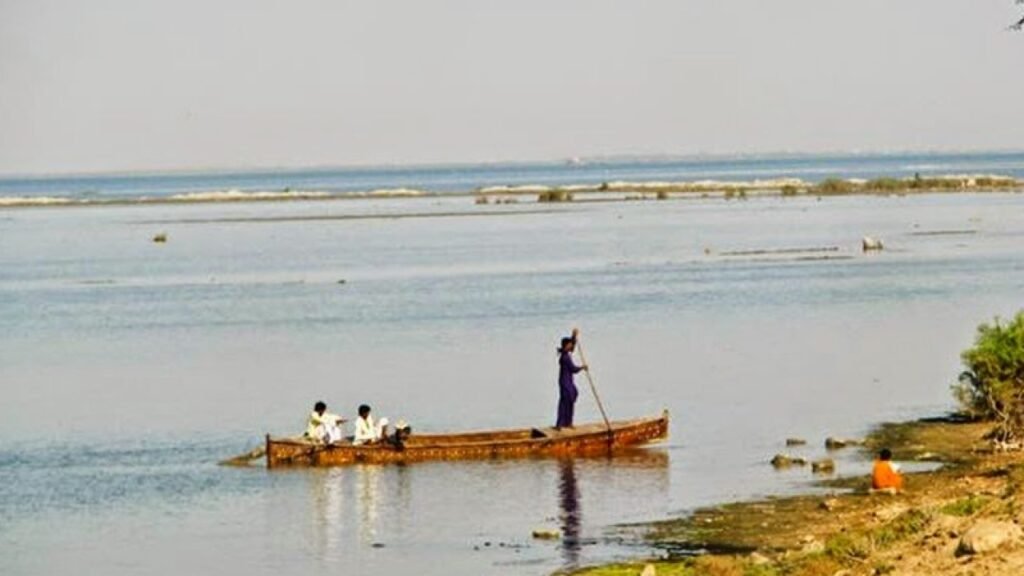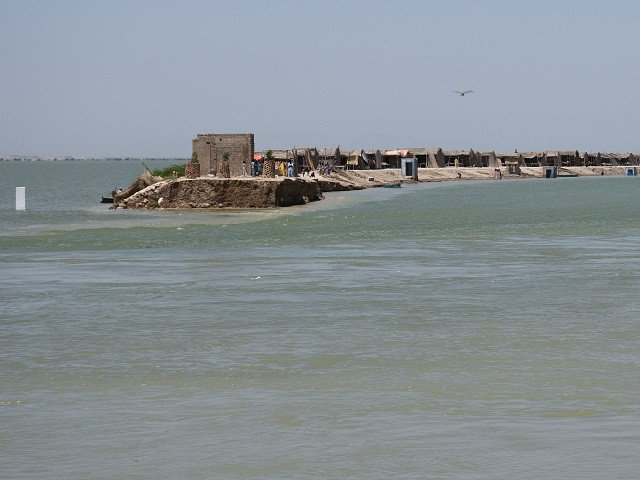After 15 days of draining into the river, Manchhar Lake’s water level dropped to 120.7 RL.
Officials from the Sindh Irrigation Department reported that“Daily 1.5 Lac cusecs water from Manchhar Lake being discharged into Indus River,”
Floodwater from Balochistan is still entering the lake through the Main Nara Valley (MNV) Drain at this time.

The Main Nara Valley (MNV) Drain is still releasing floodwater from Balochistan into the lake.
“Sehwan’s 10 union councils are still flooded with water for the last 15 days,”, according to rescue sources. . “Boats are being plied for movement in villages, while the district administration has failed to provide free boat service to flood affected people”.
“People are left in the lurch at all flood-hit union councils including UC Wahar, the native place of Sindh’s chief minister,” citizens stated. “We are struggling for two-time meal,” flood victims said.
“New DC Jamshoro Asif Jameel has also been absent from the office,” they grumbled in protest at the deputy commissioner’s camp office.
After water drainage into the river began, the lake’s water level had already begun to fall below RL 123, its maximum capacity.
The largest freshwater reservoir in Pakistan is Manchhar Lake, which spans the Dadu and Jamshoro districts of Sindh. On the right bank of the Indus River, it is where flooding is most severe in Sindh’s districts.
As a result of flooding, the water from the Kheerthar Range flash floods submerged the area and turned it into a sizable lake.
Pavan Manzoor is an experienced content writer , editor and social media handler along with a track record of youth-oriented activities in Pakistan and abroad. She was selected as a fully-funded delegate as a leadership fellow in Turkey. She also led a team of 5 volunteers at the week-long Young Professionals Fellowship in Maldives. She is also a member of the Youth Standing Committee on Higher Education.










